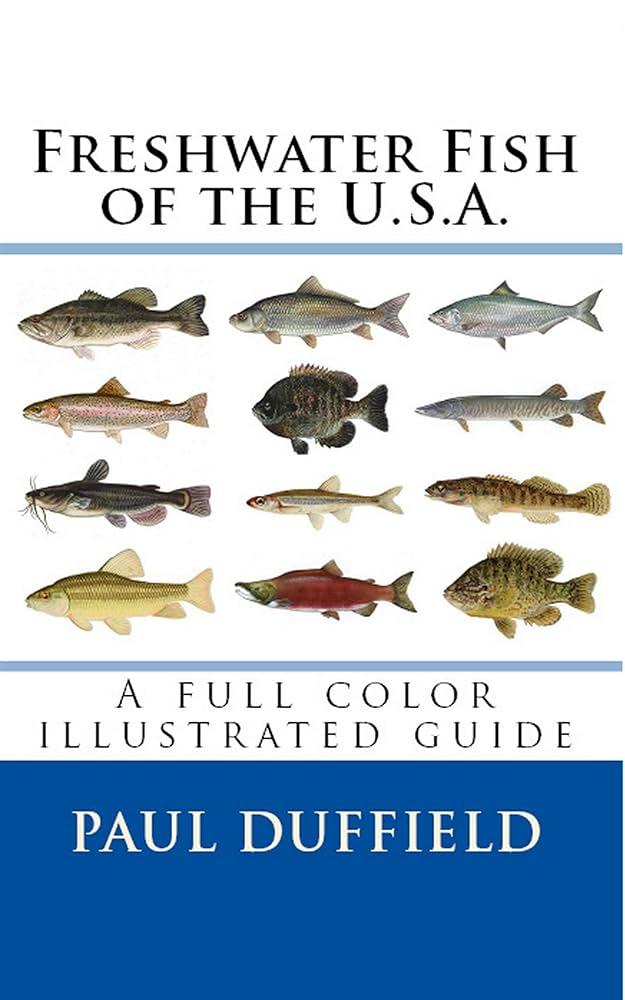A recent study conducted by researchers at the Scripps Institution of Oceanography has uncovered a growing public health concern: freshwater fish across the United States are harboring parasites capable of infecting humans. This discovery sheds new light on the potential risks associated with recreational fishing and consumption of freshwater fish, prompting experts to call for increased monitoring and awareness. The findings raise important questions about invasive species, ecosystem changes, and the need for stringent safety measures to protect both anglers and consumers nationwide.
Freshwater Fish in United States Harbor Parasites Linked to Human Infections
Recent research from the Scripps Institution of Oceanography has uncovered alarming evidence that freshwater fish species across multiple U.S. regions are hosting non-native parasites known to infect humans. These parasites, originally endemic to other parts of the world, have established themselves in local waterways, raising public health concerns. The study highlights the roles of invasive fish species and shifting ecological conditions as key factors facilitating these parasites’ spread, potentially leading to increased incidences of parasitic infections among anglers and consumers of freshwater fish.
The investigation identified several parasite species exhibiting zoonotic potential, capable of crossing the species barrier. Key findings include:
- Digenetic trematodes with complex life cycles involving fish and mammals
- Metacercariae cysts found in commercially popular fish species
- Parasite prevalence higher in Cyprinidae and Centrarchidae families
The table below summarizes parasite types, their known vectors, and potential human health risks associated with consumption or direct contact:
| Parasite Type | Fish Vector | Human Infection Risk |
|---|---|---|
| Digenetic Trematode | Bluegill Sunfish | Gastrointestinal illness |
| Metacercariae Cyst | Common Carp | Eye and skin infections |
| Nematode Larvae | Channel Catfish | Allergic reactions |
Scientific Study Reveals Pathways of Parasite Introduction Through Aquatic Ecosystems
The recent investigation conducted by researchers at the Scripps Institution of Oceanography has unveiled critical insights into how parasites that threaten human health are finding their way into U.S. freshwater fish populations. These parasites, some previously undocumented in local waters, entered aquatic ecosystems through multiple vectors including invasive species introduction, waterfowl migration, and human activities such as global trade and aquaculture. Mapping these pathways highlights complex ecological interactions that facilitate the establishment and spread of pathogens capable of infecting humans.
Key findings from the study emphasize the role of environmental factors and human intervention in parasite transmission:
- Invasive fish species act as primary reservoirs, harboring non-native parasite strains.
- Water connectivity networks allow parasites to disperse between isolated water bodies.
- Pollution and habitat changes create conditions that favor parasite survival and reproduction.
| Pathway | Mechanism | Impact on Parasite Spread |
|---|---|---|
| Invasive Species | Introduction through ballast water and stocking | High – Serves as parasite carriers |
| Migratory Birds | Transport via fecal contamination in wetlands | Moderate – Introduces parasites across regions |
| Human Aquaculture | Release of infected fish and eggs | High – Amplifies parasite populations |
Health Risks Associated with Consuming Contaminated Freshwater Fish Explored
Consuming freshwater fish contaminated with human-infecting parasites poses serious health dangers, ranging from mild gastrointestinal issues to severe systemic infections. Recent studies have identified multiple parasitic species introduced into freshwater ecosystems that are capable of infesting humans after ingestion. Symptoms can include nausea, diarrhea, abdominal pain, and in some cases, allergic reactions or secondary bacterial infections, making timely diagnosis and treatment critical. Vulnerable populations such as children, pregnant women, and immunocompromised individuals face heightened risks due to these parasitic infections.
Key health concerns linked to these parasites include:
- Risk of zoonotic transmission leading to parasitic diseases
- Potential for chronic digestive disorders and nutrient malabsorption
- Complications arising from delayed or misdiagnosis
- Public health burden linked to contaminated freshwater fish consumption
| Parasite Species | Common Symptoms | Onset Time |
|---|---|---|
| Clonorchis sinensis | Abdominal pain, jaundice | 2-4 weeks |
| Opisthorchis viverrini | Diarrhea, nausea | 1-3 weeks |
| Paragonimus westermani | Chest pain, cough | 2-6 weeks |
Experts Urge Enhanced Monitoring and Public Awareness to Prevent Parasite Transmission
Leading parasitologists and environmental health experts have emphasized the urgent need for strengthened surveillance of freshwater ecosystems across the United States. The recent discovery of human-infecting parasites introduced into local fish populations signals a potential public health threat that demands immediate attention. Experts advocate for comprehensive monitoring programs that leverage innovative diagnostic tools to detect parasites early and track their spread. They recommend collaboration between federal agencies, state wildlife departments, and academic institutions to establish a standardized database that would facilitate real-time data sharing and rapid response strategies.
Alongside enhanced scientific efforts, raising public awareness remains critical to preventing parasite transmission from fish to humans. Health officials advise recreational fishermen, consumers, and fishery workers to adopt precautionary measures, including:
- Thoroughly cooking freshwater fish before consumption.
- Practicing proper hand hygiene after handling raw fish.
- Staying informed through official health advisories and local updates.
The integration of community outreach campaigns with environmental monitoring can empower individuals to make safer choices. Together, these actions form a multi-faceted approach aimed at reducing the risk of infection and protecting the health of both humans and aquatic wildlife.
Closing Remarks
The discovery of human-infecting parasites in freshwater fish across the United States sheds new light on the complex interactions between aquatic ecosystems and public health. As researchers at the Scripps Institution of Oceanography continue to unravel the scope and impact of these parasites, the findings underscore the importance of monitoring freshwater environments and implementing robust strategies to safeguard both wildlife and human communities. Continued vigilance and collaborative research will be critical in addressing the challenges posed by these emerging parasitic threats.







